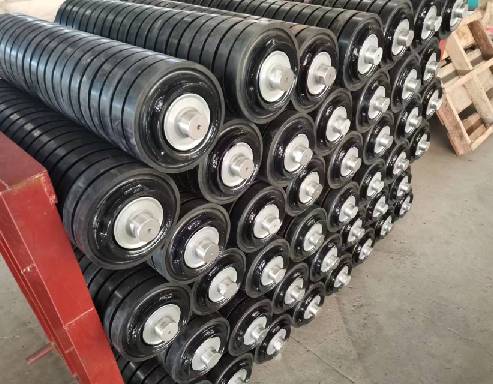 Afrikaans
Afrikaans  Albanian
Albanian  Amharic
Amharic  Arabic
Arabic  Armenian
Armenian  Azerbaijani
Azerbaijani  Basque
Basque  Belarusian
Belarusian  Bengali
Bengali  Bosnian
Bosnian  Bulgarian
Bulgarian  Catalan
Catalan  Cebuano
Cebuano  Corsican
Corsican  Croatian
Croatian  Czech
Czech  Danish
Danish  Dutch
Dutch  English
English  Esperanto
Esperanto  Estonian
Estonian  Finnish
Finnish  French
French  Frisian
Frisian  Galician
Galician  Georgian
Georgian  German
German  Greek
Greek  Gujarati
Gujarati  Haitian Creole
Haitian Creole  hausa
hausa  hawaiian
hawaiian  Hebrew
Hebrew  Hindi
Hindi  Miao
Miao  Hungarian
Hungarian  Icelandic
Icelandic  igbo
igbo  Indonesian
Indonesian  irish
irish  Italian
Italian  Japanese
Japanese  Javanese
Javanese  Kannada
Kannada  kazakh
kazakh  Khmer
Khmer  Rwandese
Rwandese  Korean
Korean  Kurdish
Kurdish  Kyrgyz
Kyrgyz  Lao
Lao  Latin
Latin  Latvian
Latvian  Lithuanian
Lithuanian  Luxembourgish
Luxembourgish  Macedonian
Macedonian  Malgashi
Malgashi  Malay
Malay  Malayalam
Malayalam  Maltese
Maltese  Maori
Maori  Marathi
Marathi  Mongolian
Mongolian  Myanmar
Myanmar  Nepali
Nepali  Norwegian
Norwegian  Norwegian
Norwegian  Occitan
Occitan  Pashto
Pashto  Persian
Persian  Polish
Polish  Portuguese
Portuguese  Punjabi
Punjabi  Romanian
Romanian  Russian
Russian  Samoan
Samoan  Scottish Gaelic
Scottish Gaelic  Serbian
Serbian  Sesotho
Sesotho  Shona
Shona  Sindhi
Sindhi  Sinhala
Sinhala  Slovak
Slovak  Slovenian
Slovenian  Somali
Somali  Spanish
Spanish  Sundanese
Sundanese  Swahili
Swahili  Swedish
Swedish  Tagalog
Tagalog  Tajik
Tajik  Tamil
Tamil  Tatar
Tatar  Telugu
Telugu  Thai
Thai  Turkish
Turkish  Turkmen
Turkmen  Ukrainian
Ukrainian  Urdu
Urdu  Uighur
Uighur  Uzbek
Uzbek  Vietnamese
Vietnamese  Welsh
Welsh  Bantu
Bantu  Yiddish
Yiddish  Yoruba
Yoruba  Zulu
Zulu Exploring the Dynamics of Vertical Roller Mills in Modern Industry
The Rise of Vertical Roller Mills in Modern Manufacturing
In recent years, the manufacturing industry has witnessed significant advancements in technology, with vertical roller mills (VRMs) emerging as a pivotal innovation. These machines have transformed the way materials are processed, offering enhanced efficiency and productivity compared to traditional milling methods.
Vertical roller mills are designed for grinding a wide range of materials, including cement, coal, and various minerals. Their unique structure features a vertically oriented grinding table and multiple rollers that crush and grind the material. This design not only reduces the energy consumption associated with the milling process but also allows for a more consistent particle size distribution.
One of the primary advantages of VRMs is their energy efficiency. Unlike traditional ball mills, which require extensive power to operate, vertical roller mills often use up to 30-50% less energy. This reduction in energy consumption translates to lower operational costs, making VRMs an attractive option for manufacturers looking to improve their bottom line. Additionally, the figures show that VRMs have a smaller carbon footprint, contributing to more sustainable production practices.
vertical roller

The versatility of vertical roller mills is another factor driving their popularity. They can efficiently handle different types of materials with varying moisture content and grindability. This adaptability makes VRMs suitable for industries ranging from cement production to the processing of agricultural products. The ability to switch between materials without significant downtime enhances operational flexibility, a vital asset in today’s fast-paced industrial environment.
Moreover, VRMs are known for their ability to produce high-quality finished products. The grinding process allows for precise control over particle size and distribution, which is crucial for industries where the quality of the final product directly impacts performance. This level of control also means that manufacturers can meet stringent standards and specifications, reassuring clients about the quality of their products.
Another noteworthy aspect of vertical roller mills is their lower maintenance requirements. Because of the fewer moving parts involved in their operation, VRMs tend to experience less wear and tear over time compared to traditional milling equipment. This translates to reduced maintenance costs and less downtime, which is particularly important in the manufacturing sector where time is money.
In conclusion, vertical roller mills have emerged as a revolutionary technology in the manufacturing industry, providing numerous benefits such as energy efficiency, versatility, product quality, and reduced maintenance costs. As industries continue to evolve and prioritize sustainability and efficiency, the adoption of VRMs is likely to expand. The future of manufacturing could very well be dominated by this innovative milling technology, enabling companies to achieve their goals while minimizing their environmental impact.
-
Revolutionizing Conveyor Reliability with Advanced Rubber Lagging PulleysNewsJul.22,2025
-
Powering Precision and Durability with Expert Manufacturers of Conveyor ComponentsNewsJul.22,2025
-
Optimizing Conveyor Systems with Advanced Conveyor AccessoriesNewsJul.22,2025
-
Maximize Conveyor Efficiency with Quality Conveyor Idler PulleysNewsJul.22,2025
-
Future-Proof Your Conveyor System with High-Performance Polyurethane RollerNewsJul.22,2025
-
Driving Efficiency Forward with Quality Idlers and RollersNewsJul.22,2025





























